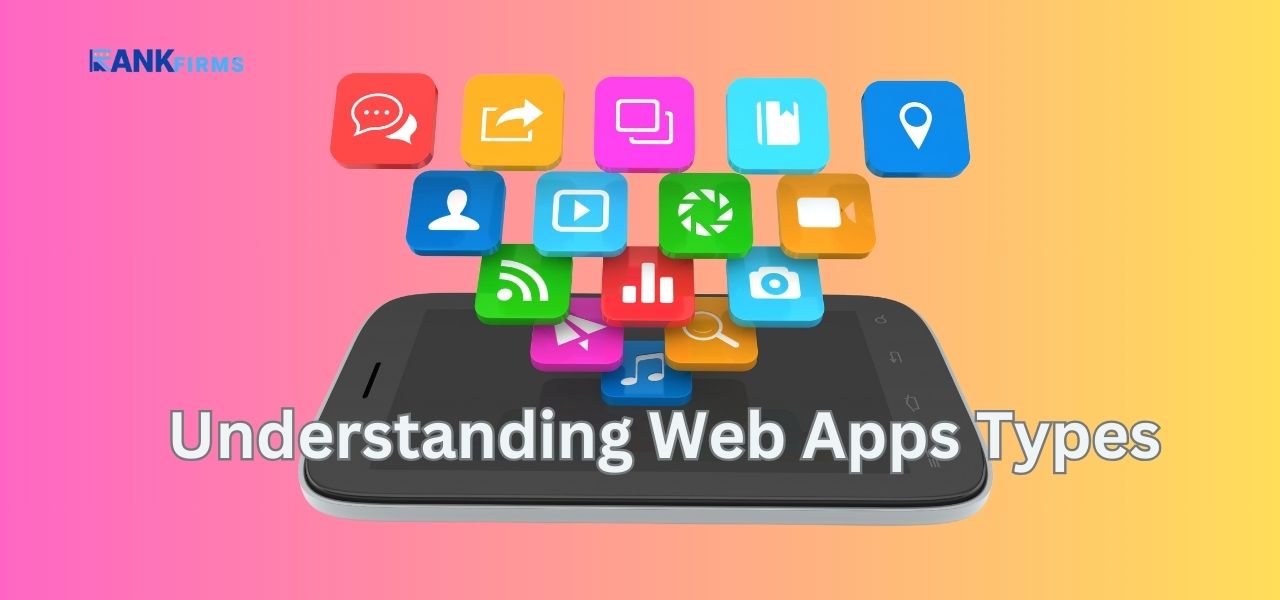How to estimate the cost of a web app? How to value a web app? Is web app development expensive? How do you assess a web application? So many questions to ask and these are relevant too. If you have an idea and want it to bring online the first thing to evaluate is the cost of designing and developing it.
Web applications are evolving as powerful tools for businesses that want to cross boundaries and scale globally. If you look at the stats, around 66% of the world’s population has access to and is connected to the internet. And we expect to see these numbers grow from 5.35 billion to 7.9 billion by 2029.
On average internet users spend around 6 hours online every day. This means, that if you decide to develop a web app, you are more likely to reach a wider audience swiftly than an offline business. The best part of being online is that you also get all age groups of individuals. Speaking of numbers, 75% of internet users are between 15 and 24 while 65% are 25 and over.
It is also observed that people spend more than an hour on desktop devices every day and almost 4 hours on their mobile devices each day. So, if you still doubt whether you should develop a web app, you should not as these numbers will increase day by day assuring your business scalability.
Now, let’s address the pain point – ‘Cost’. Before addressing the cost with website development companies, understand what type of web application you want. Do you want a simple web app or medium web app or a complex and high-end web app?
Understanding Web Apps Types

You already know that a web application is software that does not require installation to run, unlike any other mobile application. You can directly interact with the application through the Internet. However, they are categorised just as mobile apps – simple, moderate and high-end. Let’s understand these categories:
Web apps can be categorised based on their complexity and functionality:
1. Simple Web Apps:
Basic Structure:
Often static, with limited interactivity.
Focus:
Displaying information, such as company profiles, product catalogues, or simple forms.
Examples:
Landing pages, online brochures, contact forms.
2. Medium Complexity Web Apps:
Increased Functionality:
Dynamic content, user interactions, and basic database integration.
Features:
Online shopping carts, content management systems (CMS), online forums, and basic social networking platforms.
Examples:
E-commerce websites, blogging platforms, online booking systems.
3. Complex or High-End Web Apps:
Advanced Features:
Real-time data processing, complex integrations, and robust user interactions.
Technology:
Often built using frameworks and libraries for scalability and performance.
Examples:
Enterprise resource planning (ERP) systems, cloud-based software, collaborative tools, and large-scale social networking platforms.
Also Read: Top 10 FAQ before hiring software development company
4. Single-Page Applications (SPAs)
Advanced Features:
SPAs load a single HTML page and dynamically update content as the user interacts with the app.
Technology:
Built using JavaScript frameworks like React, Angular, or Vue.js. Provide a more app-like experience with smooth transitions and fast loading times.
Examples:
Social media platforms, online banking portals, web-based email clients.
5. Multi-Page Applications (MPAs)
Advanced Features:
Traditional web applications with multiple HTML pages that load independently.
Technology:
Each page represents a different view or section of the application.
Examples:
Most e-commerce websites, news portals, and corporate websites.
6. Progressive Web Apps (PWAs)
Advanced Features:
A type of application software delivered through a web browser, combining the best features of web and mobile apps.
Technology:
Offer offline functionality, push notifications, and the ability to be installed on the home screen.
Examples:
E-commerce apps, news apps, and other utility apps that need to work offline.
7. Rich Internet Applications (RIAs)
Advanced Features:
Web applications that provide a rich, desktop-like experience.
Characteristics:
Often use technologies like Flash (previously), Flex, Silverlight, or HTML5 to deliver interactive content.
Examples:
Online gaming platforms, video streaming services, and complex business applications.
Talking about their cost, here is the breakdown of the following applications:
| Web App Type | Estimated Cost Range (USD) |
| Simple Web Apps | $5,000 – $50,000 |
| Medium Complexity Web Apps | $50,000 – $150,000 |
| Complex or High-End Web Apps | $150,000+ |
| Single-Page Applications (SPAs) | $50,000 – $250,000 |
| Multi-Page Applications (MPAs) | $30,000 – $200,000 |
| Progressive Web Apps (PWAs) | $50,000 – $200,000 |
The cost estimation is shared based on an average observation requested by mobile app development companies of each category. However, we will share how these costs vary, the factors that impact the cost and which web app suits your business needs.
Factors Influencing Web App Development Cost

While the type of web app significantly impacts the overall cost, several other factors play a crucial role in determining the final price tag:
1. Development Team and Location
In-house vs. Outsourced:
Building an in-house development team requires significant upfront investment in salaries, benefits, and infrastructure. Outsourcing can often be more cost-effective, especially for smaller projects.
Developer Location:
The geographic location of the development team influences labour costs. Countries with lower cost of living generally offer lower development rates.
2. Technology Stack
Open-Source vs. Proprietary:
Using open-source technologies can reduce costs, but might require additional development time and expertise.
Complexity of Technology:
Advanced technologies like artificial intelligence, machine learning, or augmented reality can significantly increase development costs.
3. Design and User Experience (UX)
Design Complexity:
A sophisticated and visually appealing design requires skilled designers and can add to the overall cost.
User Testing:
Iterative testing to refine the user experience is crucial but can also increase development time and budget.
Features and Functionality
Core vs. Additional Features:
Focusing on core functionalities can help control costs. Adding complex features like real-time collaboration, advanced analytics, or integrations with third-party systems will increase development time and budget.
4. Project Management and Oversight
Project Management Costs:
Dedicated project managers can streamline the development process but add to the overall cost.
Quality Assurance (QA):
Thorough testing is essential for a successful web app, but it also requires additional resources.
5. Deployment and Maintenance
Infrastructure Costs:
Hosting and server costs can vary depending on the scale of the application.
Ongoing Maintenance:
Budgeting for updates, bug fixes, and security patches is crucial for long-term success.
6. Additional Considerations
Third-party Integrations:
Integrating with external services or APIs can add complexity and cost.
Security Measures:
Implementing robust security measures is essential but can increase development time and budget.
Compliance Requirements:
Adherence to industry regulations (e.g., GDPR, HIPAA) might involve additional security measures and legal consultations.
By carefully considering these factors and making informed decisions, you can develop a web app that aligns with your budget and business objectives. However, you get smart methods to reduce the cost when you ask software development companies about it.
Strategies to Reduce Web App Development Costs

To develop a web application within budget, consider these strategies:
1. Prioritization and Planning
Minimum Viable Product (MVP):
Focus on core functionalities initially. Expand later based on user feedback.
Detailed Requirements:
Clearly defined requirements prevent scope creep and unnecessary features.
Agile Methodology:
Employ agile development for flexibility and cost-efficiency.
2. Technology and Tools
Open-Source Solutions:
Utilize free, open-source tools and frameworks to reduce costs.
Cloud-Based Infrastructure:
Consider cloud platforms for scalability and cost-efficiency.
Code Reusability:
Reuse existing code components to accelerate development.
3. Team and Outsourcing
Offshore Development:
Explore options for outsourcing to regions with lower development costs.
Freelancers:
Consider hiring freelancers for specific tasks to reduce overhead.
In-house vs. Outsource:
Carefully evaluate the pros and cons of building an in-house team versus outsourcing.
4. Design and Development
Modular Design:
Break down the application into smaller, reusable components.
Rapid Prototyping:
Create quick prototypes to validate concepts and reduce rework.
Continuous Testing:
Early bug detection saves time and money.
5. Cost Optimization
Negotiate with Vendors:
Explore opportunities to negotiate better rates with suppliers and vendors.
Monitor Expenses:
Track development costs closely and identify areas for potential savings.
Value Engineering:
Analyze the cost-benefit ratio of different features and prioritize accordingly.
By implementing these strategies, you can develop a high-quality web application while staying within budget. Now, you would want to know in how much time will my budget be spent and when can I have my web app ready. Here is your answer!
Also Read: What matters when evaluating Software development Cost?
Development Timelines for Different Web App Types
This is the approximate time mentioned. However, the time varies in different web app development companies due to various factors.
| Web App Type | Development Time (Approximate) |
| Simple Web App | 2-4 weeks |
| Medium Complexity Web App | 2-6 months |
| Complex or High-End Web App | 6+ months |
| Single-Page Application (SPA) | 2-6 months |
| Multi-Page Application (MPA) | 2-8 weeks (for basic) to several months for complex |
| Progressive Web App (PWA) | 3-8 months |
Factors Affecting Development Time
1. Complexity of features:
More features and functionalities extend development time.
2. Design iterations:
Refining the design can add weeks to the timeline.
3. Team size and experience:
A larger, more experienced team can accelerate development.
4. Technology stack:
Complex technologies might require additional learning and development time.
5. Testing and quality assurance:
Thorough testing is crucial and adds to the overall timeline.
Challenges in Developing a Web Application
1. Defining Project Requirements
Challenge: Miscommunication or unclear project requirements can lead to scope creep and delays.
Solution: Engage stakeholders early, create detailed documentation, and use wireframes or prototypes to align expectations.
2. Selecting the Right Technology Stack
Challenge: Choosing an unsuitable technology stack can lead to compatibility issues, reduced performance, or higher costs.
Solution: Assess the app’s requirements, scalability needs, and developer expertise when deciding on the technology stack.
Also Read:The Best Software Development Frameworks of 2024
3. Scalability Concerns
Challenge: Developing an app that cannot handle future growth in users or data can result in poor performance.
Solution: Use scalable architectures like microservices and plan for horizontal and vertical scaling.
4. Data Security and Privacy
Challenge: Web apps are vulnerable to cyberattacks like data breaches, phishing, and SQL injection.
Solution: Implement robust security practices, such as encryption, regular vulnerability testing, and compliance with regulations like GDPR or CCPA.
5. Ensuring Cross-Browser Compatibility
Challenge: A web app may not perform consistently across all browsers and devices.
Solution: Test thoroughly using tools like BrowserStack to identify and address compatibility issues during development.
6. Performance Optimization
Challenge: Slow-loading web apps can result in poor user experience and high bounce rates.
Solution: Optimize code, compress assets, use a content delivery network (CDN), and implement caching strategies.
7. Integration with Third-Party APIs
Challenge: APIs may have inconsistent performance or undergo unexpected changes, affecting functionality.
Solution: Use reliable APIs, monitor their performance, and have fallback mechanisms in place.
8. Managing Development Costs
Challenge: Budget overruns can occur due to unforeseen complexities or inefficient processes.
Solution: Use agile methodologies, set a realistic budget with contingency plans, and prioritize features.
9. Testing and Quality Assurance
Challenge: Inadequate testing can lead to bugs, crashes, and negative user feedback.
Solution: Adopt a comprehensive testing strategy, including unit, integration, performance, and user acceptance testing (UAT).
10. Maintaining User Engagement
Challenge: Poor UI/UX design can fail to retain users, impacting the app’s success.
Solution: Focus on intuitive navigation, user-centric designs, and continuous feedback loops for improvement.
11. Keeping Up with Technological Changes
Challenge: Rapid advancements in web technologies can make an app obsolete.
Solution: Build a modular app that allows for updates and leverage technologies with strong community support.
12. Managing Team Collaboration
Challenge: Miscommunication or lack of coordination among team members can delay the project.
Solution: Use project management tools like Jira or Trello and conduct regular stand-up meetings to streamline collaboration.
13. Handling Complex Features
Challenge: Advanced features like real-time functionality, chatbots, or AI integrations can add complexity.
Solution: Break down complex features into manageable modules and prototype them before full-scale implementation.
14. Ensuring Accessibility Compliance
Challenge: Meeting accessibility standards (e.g., WCAG) can be overlooked, limiting usability for disabled users.
Solution: Incorporate accessibility as a design principle from the start and test for compliance.
Monetisation Strategies for Web Apps
1. Subscription-Based Model (SaaS)
Users pay a recurring fee (monthly or yearly) for access to the app’s services or features. Predictable and steady revenue stream.
2. Freemium Model
Offer basic features for free and charge for advanced features or services. Attracts a large user base with the free version while converting a percentage to paid users.
3. Advertising
Display ads on the web app and earn revenue based on clicks (CPC), impressions (CPM), or affiliate links. Works well for apps with high traffic and diverse audiences.
Also Read: How Marketplace for Business Can Help Generate Business?
4. E-commerce Sales
Sell physical or digital products directly through the app. Direct sales can yield high profit margins, especially for niche products.
5. Transaction Fees
Charge a percentage or flat fee for each transaction processed through the app. Scales with the number of users and transactions.
6. Premium Memberships or Features
Offer exclusive access to content, features, or communities for a fee. Enhances user loyalty while generating revenue.
7. Selling API Access
Provide third-party developers access to your app’s API for integration with other platforms. Expands your ecosystem while earning fees from API usage.
8. Lead Generation and Data Monetization
Collect and sell leads or aggregated, anonymized data to businesses. Provides value to companies looking for targeted data or potential customers.
9. Crowdfunding or Donations
Users voluntarily support the app through donations or crowdfunding campaigns. Builds a community-focused revenue stream, particularly for non-profit or creative projects.
10. Marketplace Commissions
Allow users to buy and sell goods or services through your platform, taking a percentage of each transaction. Creates an ecosystem that encourages user activity and engagement.
11. Licensing and White-Labeling
License your app’s technology or white-label it for other businesses to use. Allows other companies to leverage your solution while generating additional income.
12. Pay-Per-Use Model
Charge users based on their usage of specific features or services. Offers flexibility to users while aligning revenue with consumption.
FAQs on Evaluating Web App Development Cost
1. What factors influence the cost of web app development?
Several factors impact the cost, including the complexity of features, technology stack, development team location, design requirements, third-party integrations, and project timelines.
2. How does the choice of technology stack affect development costs?
The technology stack determines the tools, frameworks, and languages used in development. Some stacks may require specialized expertise or have associated licensing fees, which can influence overall costs.
Also Read: A Comprehensive Guide To Website Development Technologies In 2024
3. Is it more cost-effective to hire a freelancer or an agency for web app development?
Freelancers might offer lower initial costs, but agencies typically provide a broader range of expertise and support, which can be more cost-efficient for complex projects in the long run.
4. What is the typical time frame for developing a web application?
The time frame depends on the project’s scope and complexity. Simple apps can take 2–4 months, while more complex apps might require 6–12 months or longer.
5. Are there any hidden costs in web app development?
Yes, hidden costs may include ongoing maintenance, hosting, security updates, scaling infrastructure, and future feature enhancements.
6. How does the design of a web app impact the cost?
Custom, user-friendly designs often require additional time and expertise, increasing costs. Templates or pre-built UI kits can help reduce design expenses.
7. What role does location play in development costs?
Development rates vary based on location. For example, developers in North America typically charge higher rates compared to those in Eastern Europe or South Asia.
8. How can I ensure the best return on investment (ROI) from my web app?
Focus on user-centered design, scalability, and continuous improvement. Regularly gather user feedback to enhance features and functionality.
9. What is the cost difference between a basic MVP and a full-fledged web app?
An MVP (Minimum Viable Product) focuses on core features and is more affordable, often costing between $10,000 and $50,000. A full-fledged app with advanced features may range from $50,000 to $200,000 or more.
10. How can I reduce web app development costs without compromising quality?
Prioritize essential features, opt for agile development, use open-source tools, and hire a well-experienced team to avoid rework and delays.
Conclusion
The development time for a web application is highly variable and depends on numerous factors including complexity, features, team size, and technology stack. While simple web apps can be developed relatively quickly, complex applications requiring advanced functionalities can take several months or even years to complete. To achieve optimal results, a balance between development speed and quality is essential. Prioritising core features, utilizing efficient development methodologies, and allocating adequate time for testing are crucial for successful web app development.







